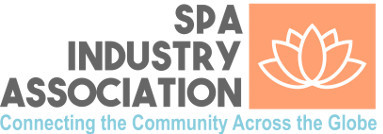Spas must always be managed in the most rigorous manner during “normal” times. With the end of the confinement due to the COVID19 pandemic, time is all but “normal” and the reopening calls for new strict hygiene processes, limiting operational capacities and potential revenues of spas. It is more than ever imperative to ensure that your spa has all the fundamental structures allowing the best operations optimization.
THE THREE PILLARS FOR REOPENING are the structural basis without which the survival of our spas is quasi impossible in this post-pandemic time.
- Re-definition of the organic traffic flows
1.THE ORGANIC TRAFFIC FLOWS
There are 3 “organic traffic flows” which together allow the spa management and existence:
- The clients traffic flow
- The treatment traffic flow
- The operational traffic flow
The goal of the organic traffic flows management is to create a symbiosis of the different flows allowing, like in an “opera ballet”, an easy and balanced circulation of each flow, within a logical and practical chain of treatments, of maintenance, of laundry organization, as well as of clients’ experience. Today, while respecting the new hygiene processes, it is imperative to set-up new traffic systems optimizing the clients’ capacity, allowing minimum physical contacts between clients, between clients and staff, as well as between staff members.
The clients’ traffic flow is the models and sequences of the client’s traffic from the moment they enter the spa, until their check-out. As an example, if your spa has a structural capacity for 100 clients per day, with the new requirements, this capacity could easily be reduced by half. But if the traffic “ballet” is not
appropriately orchestrated and synchronized, your spa capacity could be even more reduced, and your business to become a thing of the past. Furthermore, the client’s impression of crowd, real or not, will destroy the client’s experience. This client’s stress, which might be only a anxiety by anticipation, will be enough for the client to never return to your spa, and with the word-of-mouth, becoming a question of life or death for the spa.
The treatments traffic flow is all of the circulation patterns necessary for the treatments throughout the spa. So first of all, look at your menu, and the reservation ratios of all your proposed treatments. Make a list of the list “in demand” treatments, and write down the net margin of each treatment, as well as the average net revenues of each treatment for the last three years. Then, take off your menu the treatments the least popular, beginning with the least profitable. Once it’s done, reorganize, as much as technically possible, the treatment assignment of each treatment room, keeping in mind individual services and bundles. The goal of this exercise is to ease and minimize the corridors traffic, to eliminate unjustified treatment rooms immobilization and optimize their potential revenues.
The operational traffic flow is all the traffic patterns supporting operations throughout the spa, as much for treatment support as for management, laundry pick-up, maintenance, etc. Once the clients traffic flow and the treatment traffic flow are adequately redefined, you have to think about all the circulation required to support the clients and treatments traffics management. As an example, let’s say that you were used to have your staff go to the stock room between each treatment to get the needed products: Today, in order to minimize the crowd in the corridors, as well as the clients stress level, you could decide to have the staff prepare in advance for the day all of the products needed in each treatment room for the day. Same thing for the linen, towels, small equipment, and other accessories. Maybe you will even decide to transform a centered treatment room into a stock and dispensary space in order to optimize the potential revenues of the other treatment rooms while minimizing the traffic.
After all, with a good management of the treatment rooms, it is better to reach 85% of half of the structural capacity, than to reach 30% of the totality of the same capacity!…
2. IMPLEMENTATION OF NEW “MARKETABILITY LEVELS” FOR EACH SPACE
The “marketability level” is how far you are ready to go to push the level of visibility, of retail sales, and of the revenues of your business for each space and square foot in your spa. @ perspective: one is objective, the second is subjective. The first one (objective) is based on the structure and nature of each space. The boutique, in essence, is defined as the space with the highest level of marketability. It is logical to prioritize there the visibility of all your retail products, your promotions as well as your treatments, including all of the marketing supports at your disposal. At the opposite, your relaxation room is the space with the lowest marketability level for retail sales and treatments visibility. However, don’t underestimate its value as it has the highest marketability level when it comes to client experience. And how about the treatment rooms, corridors, locker rooms, and even toilets? In fact, each and every space in your spa must be considered as having its own marketability level.
The second perspective (subjective) is base on the vision of the owner and the philosophy of the spa. Let’s look at the reception/boutique: Is your target strictly the client in the spa, or also the outside passerby? Do you want to attract only the pedestrians, or also people in cars and bus? You could have on walls or windows flat screens presenting products and treatments. And to create visibility from the outside, have flat screens in the windows turned toward the street. Do you want your clients to be able to touch the retail products, or do you want them to only watch the products? What supports are you ready to use: statics, dynamics, interactives, or even virtual ones?
We know well that stimulation of the 5 senses is essential to creating the client’s experience as well as stimulating retail sales: Which of the 5 senses will you stimulate and in what space? What about the corridors: Are you using the spa corridors to motivate your client’s interest in treatments and retail? What marketing supports will you use keeping in mind that you do want your clients to stop in the middle of the corridor and create heavier traffic… And how about the locker rooms? Would you consider posters and flat screens showing treatments and retail products? And what if you would put shampoos and shower gels that you are selling in your boutique… What strategies and marketing supports will you implement in your treatment rooms where most retail sales should be originating from?
In your spa, you have to define the marketability level to apply to each space and choose the marketing supports to be used in order to bring every space at the best level of marketability that you need it to be.
3. DEVELOPMENT OF MORE EFFECTIVE RETAIL SALES AND MERCHANDISING POLICIES
The importance of retail sales in spas
Retail sales are vital in our industry. In fact, a spa which would not generate any revenues from retail products couldn’t be viable.
In a spa, revenues are generated through treatments and retail sales. Treatments are divided in 2 categories: hands-on and hands-off. Generally, the second category requires equipment or structures as Hammam, cryotherapy chamber, sauna, salt walls, pool, etc. their investment and amortization costs weight heavily on the net revenues of these treatments.
In a well manage spa, a hands-on treatment can generate a net revenue up to 27% of its gross revenue with an hour average space and time immobilization while retail products sales can generate up to 42% of the gross sale with a minimal space and time immobilization. In most spas, retail sales generate between 7% to 15% of the global revenues. In order to create balanced revenues, spas should have a minimum average of retail revenues of 30% of the global revenues.
So, ask yourself the right question: what can I do to in my spa to generate more revenues from retail sales?
Merchandising: Create the retail products perceived value
Today, the value of any retail product is based more on subjective parameters than on objective ones: Objective parameters are the real cost, from the production to the retail shelf in the boutique. Subjective parameters are based on creating an image, a perception, justifying a higher price, accepted and even magnified by the consumers: THE PERCEIVED VALUE.
In our industry, we know this concept very well, adding value to the treatment with the “clients’ experience”. We know it is legitimate and we know how to create this perception of treatment’s higher value, so how can we do the same for the retail products?
Let’s compare TJMAXX versus CARTIER Boutique: AT TJMAXX, there can be 50 bottles of the same product per shelf square foot, depending on the product size. The message is that the product is cheap and for everybody. In the 12 feet wide window of the CARTIER boutique, there will be a very limited number of products, and just one unit of each: Here, the message is that each product is unique, expensive, for an elite. You don’t want your spa retail products to be perceived like at TJMAXX, and maybe not like at CARTIER, but somewhere in the middle, depending on your targeted clientele.
You must also organize the placement of the products both vertically and horizontally: A product placed too low or too high will have a lower perceived value, while a product placed at the center of the shelf at eye level will be the most noticeable, meaning the highest value either for its quality and price, or as the best promotion of the day/week/month. Finally, when a client enters a boutique or a store, his/her first reflex is to look on its right side. In most spas, retail sales take place after treatments, coming back in the reception/retail space from the backside of the space, and what was on his/her right side while entering the spa, is now on his/her left side… Keep this element in mind when organizing your retail sales shelving system in your spa boutique.
During this post COVID19 pandemic, while coming out of confinement, It is essential, even vital for all spas to use every and all available existent tools in a complete and rigorous manner, to allow your spa to survive months of closure and new limiting work and operational processes for hygiene and social distances. THE THREE PILLARS OF SPAS REOPENING are the foundations of this new reality. Defining and developing these three pillars are the essence of the revisited spa structure, to recreate a unique “clients’ experience”, as well as a new treatments and operations management adapted to the new reality transforming your spa in a flourishing business.
Sam Margulies
+33 613 79 47 79
Sam Margulies is a spa designer for more than three decades. He has conceived and designed over 180 spas around the world. Feng Shui Master, his international implication in the spa world, and his pragmatic approach to floor plans creation and development has put him in the top list of the best specialists in the conception and design of spas worldwide.




